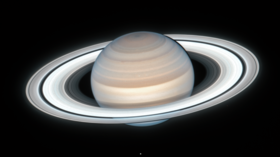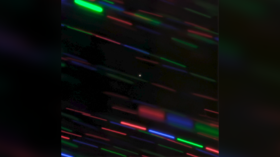Hubble shares incredible PHOTO showing summertime on Saturn

NASA has shared its latest breathtaking snap of Saturn taken by the Hubble Space Telescope, which shows the so-called planetary ‘lord of the rings’ at the height of its summertime, some 839 million miles from Earth.
The photo, snapped on July 4, 2020, showcases summer in Saturn's northern hemisphere and includes the gas giant’s moons – Mimas on the right, and Enceladus at the bottom.
Here’s a brand new look at Saturn! 📸Like Earth, Saturn is tilted on its axis and has seasons. In this Hubble image, taken earlier this month, it’s summertime in the northern hemisphere: https://t.co/uoQ6pJY36opic.twitter.com/h6ItMUi4ee
— Hubble (@NASAHubble) July 23, 2020
The picture captured a number of atmospheric storms, which come and go each year but can have dramatic effects on the coloration of the planet’s mostly hydrogen and helium atmosphere.
The traces of ammonia, methane, frozen water vapor and hydrocarbons provide the yellows and browns visible in the picture, offset by the red and blue hazes at the north and south poles – both of which are the subject of much speculation.
The red haze may be due to the increased sunlight, which might result in the burning off of ice from aerosols in the atmosphere, which add a blue tint during the winter.
Also on rt.com Mars could develop its SECOND planetary ring in next 100mn years, claims wild new theory“It's amazing that even over a few years, we're seeing seasonal changes on Saturn,” said lead investigator Amy Simon of NASA's Goddard Space Flight Center.
The seasonal snaps were part of the Outer Planets Atmospheres Legacy (OPAL) project, aimed at improving understanding of how our solar system's gas giants formed and how they evolve over time.
Think your friends would be interested? Share this story!














